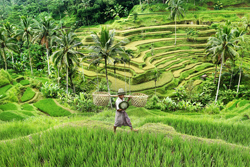 ©FAO/Daniel Hayduk
©FAO/Daniel Hayduk
Worldwide, between 720 and 811 million people faced hunger in 2020. With the world population projected to exceed nine billion people by 2050, global agricultural output must expand by an estimated 60 percent to meet global food needs.
Natural forests are critical for the survival of forest-dwellers, including many indigenous peoples, and they help deliver clean water to agricultural lands by protecting catchments.
Forests, trees and agroforestry systems contribute to food security and nutrition in many ways, but such contributions are usually poorly reflected in national development and food security strategies. Coupled with poor coordination between sectors, the net result is that forests are mostly left out of policy decisions related to food security and nutrition.
| Publications
Related links
ContactSooyeon Laura JIN
|




